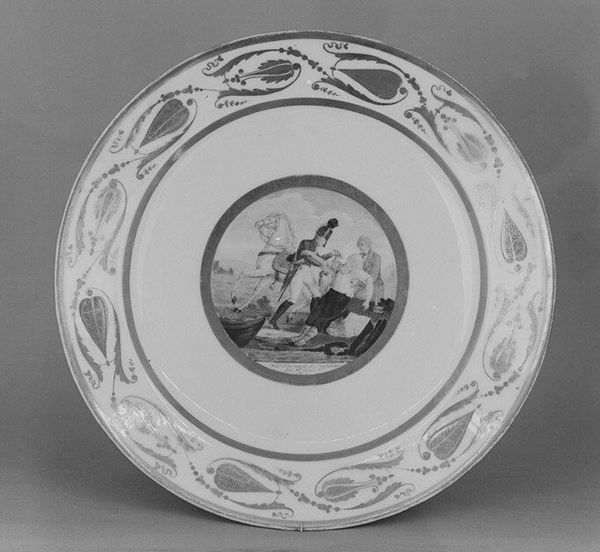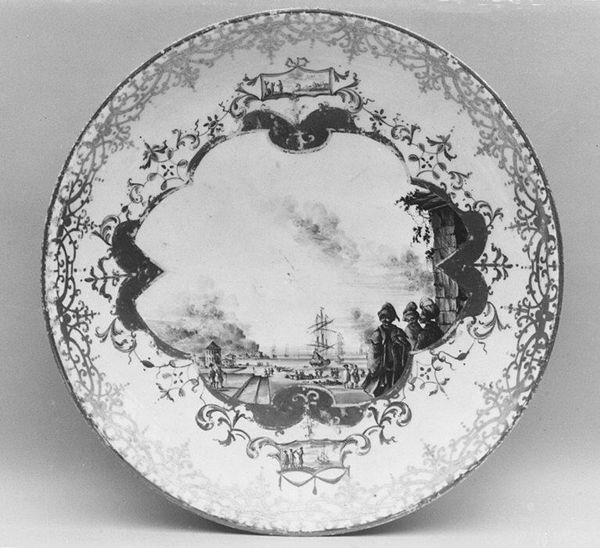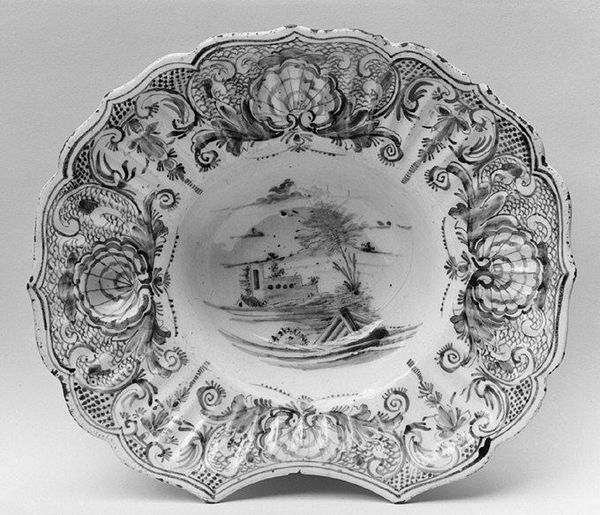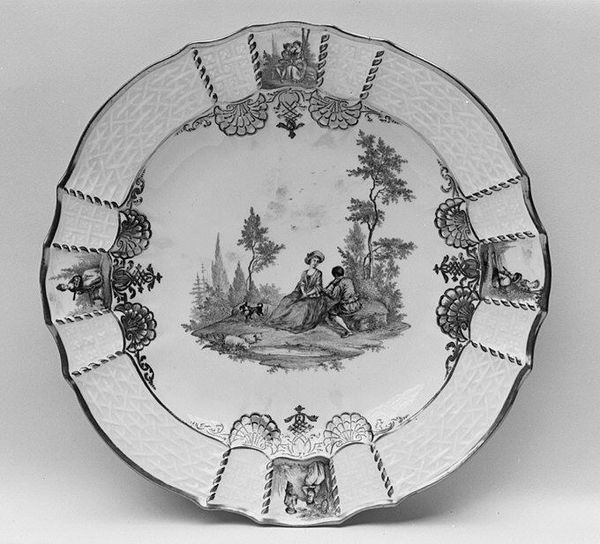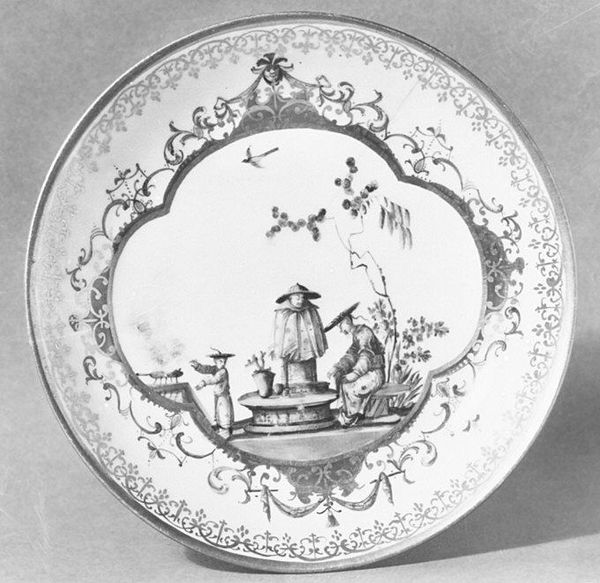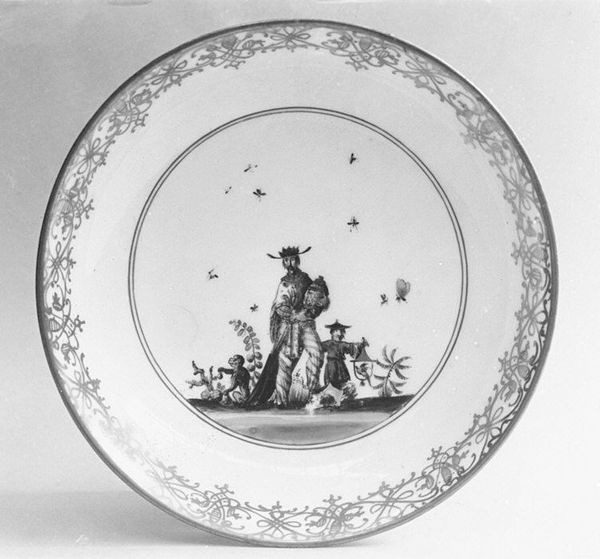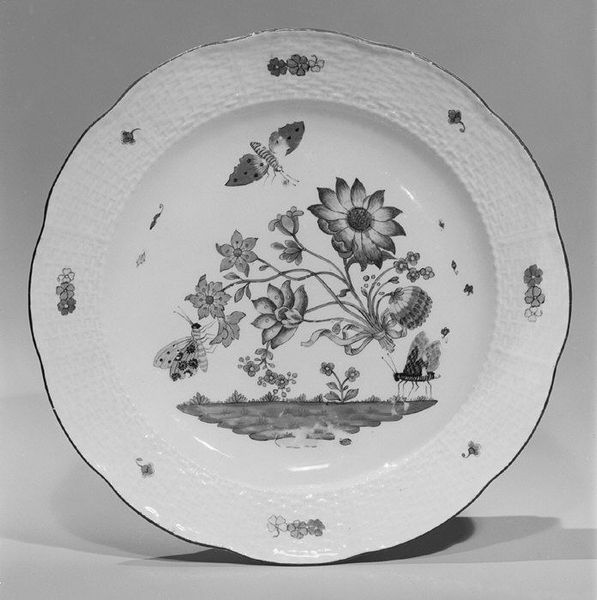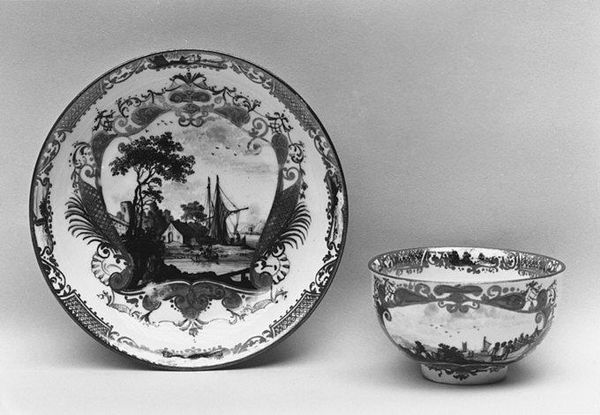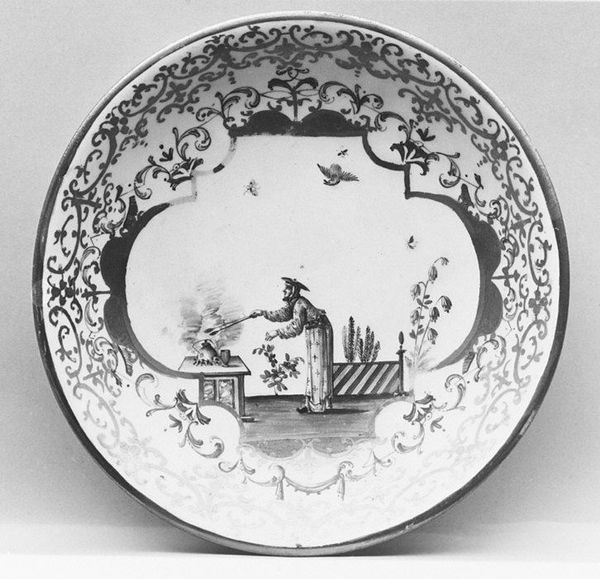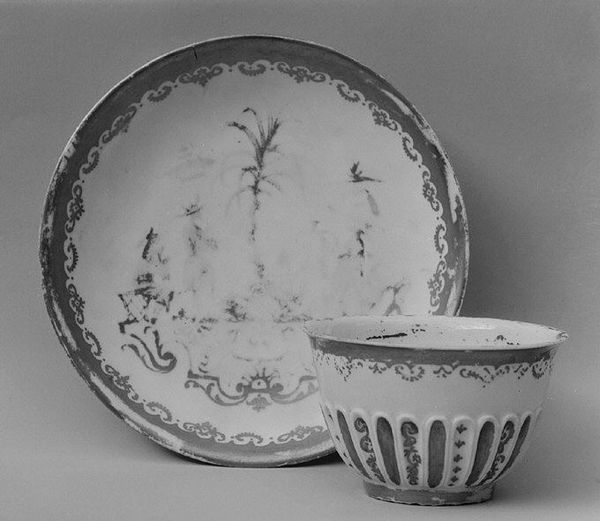
Dimensions: Diameter: 9 1/2 in. (24.1 cm)
Copyright: Public Domain
Curator: Immediately striking is the tranquility of this piece; a sort of muted serenity radiates from the image. The subtle variations in tone and the somewhat melancholic scene it depicts really resonate. Editor: Indeed. We're looking at a porcelain plate, crafted between 1775 and 1785. The piece originates from The Hague, and currently resides at the Metropolitan Museum of Art. It exemplifies the decorative Rococo style popular at the time. Curator: Rococo for everyday tableware, fascinating! How did the production of these objects tie into the broader societal shifts of the late 18th century? Was it only for the elite? Editor: Not always. Although, the delicacy of the porcelain and the labor invested in its decoration certainly implies a degree of affluence, perhaps reflecting an aspirational aesthetic spreading through various levels of society at that time. The central motif—a pastoral landscape with a building—speaks to the period's taste. Curator: Let's break down the composition. Notice the plate’s scalloped edge, punctuated with those repeating, almost basket-like motifs, a lattice work connected by organic floral detailing, surrounding the placid central scene. And how does the use of color—mostly subdued grays and blues—influence our interpretation? Editor: The limited palette perhaps focuses our attention on the forms and their arrangement within the circular format, creating balance and unity while softly drawing the eye inwards, towards the detailed painting. A house, a tree, a figure in a landscape—simplicity idealized. The appeal of the simple life, conveniently painted on something for daily use. Curator: A touch of irony there, perhaps, contrasting idealized simplicity against the very real complexities of labour, trade, and empire. It provides us insight into production lines and consumption culture in that period. Editor: Agreed. Viewing "Plate," it becomes clear this seemingly simple decorative object reflects so much about that period, a meeting of landscape, class, and craftsmanship on one refined surface. Curator: The journey from the artist's hand to the table tells its own quiet, but ultimately revealing, story. Editor: A captivating exploration indeed, reminding us that beauty is as often functional and complex as it is ornamental.
Comments
No comments
Be the first to comment and join the conversation on the ultimate creative platform.
